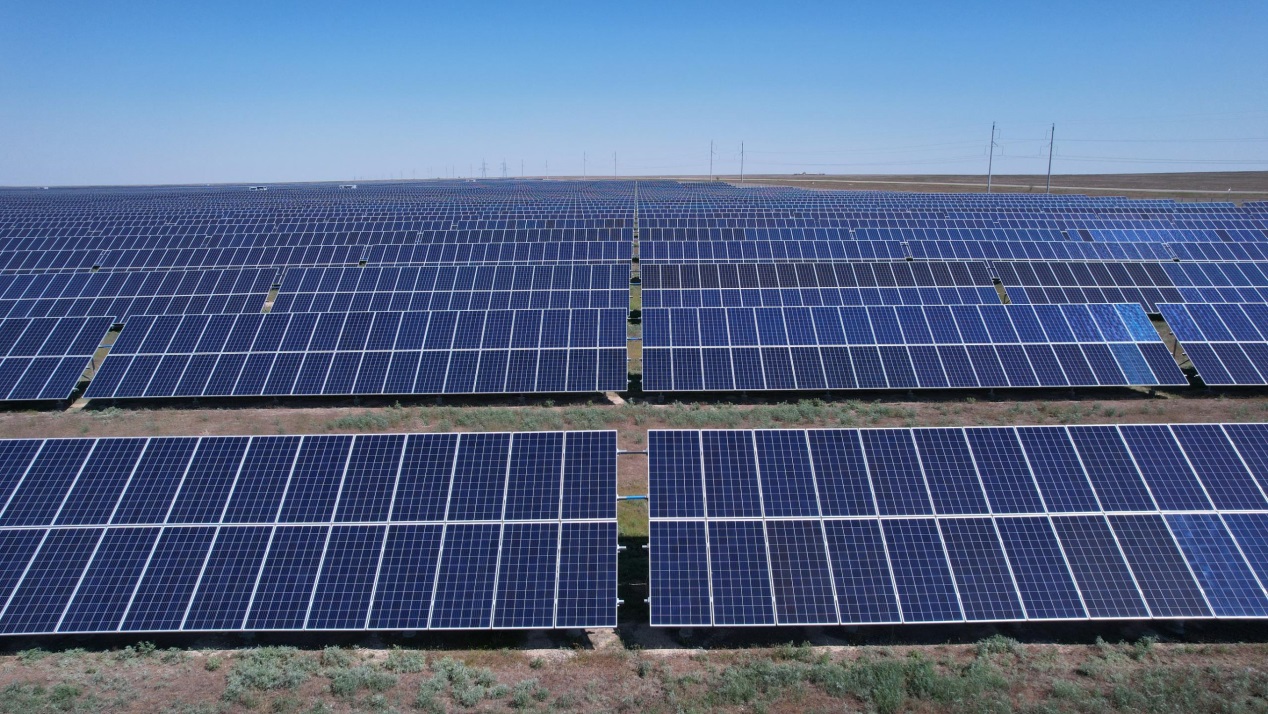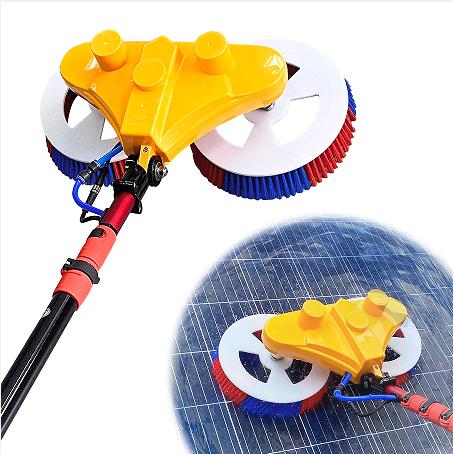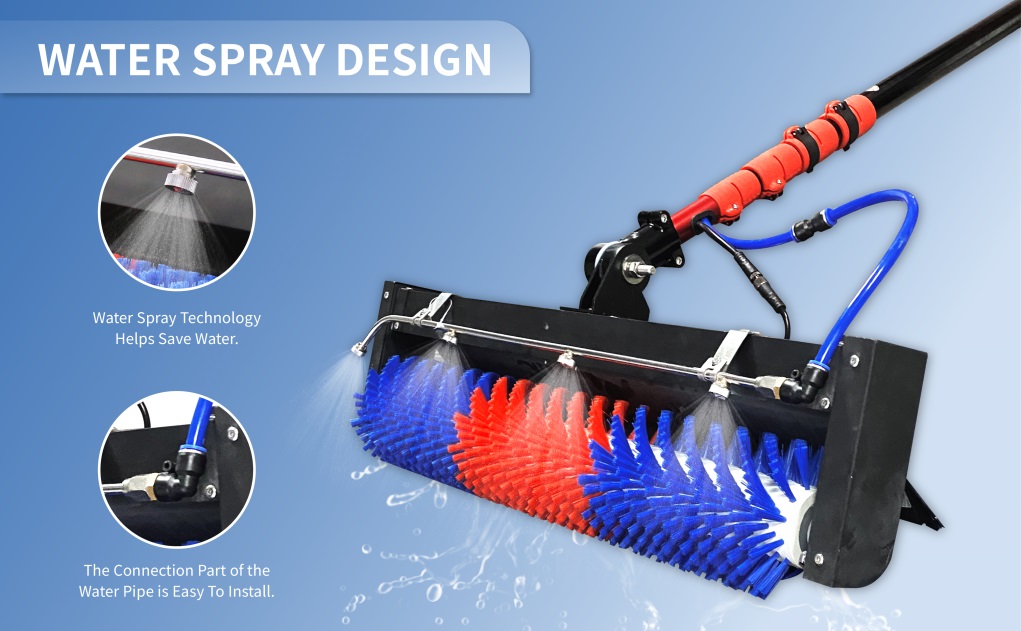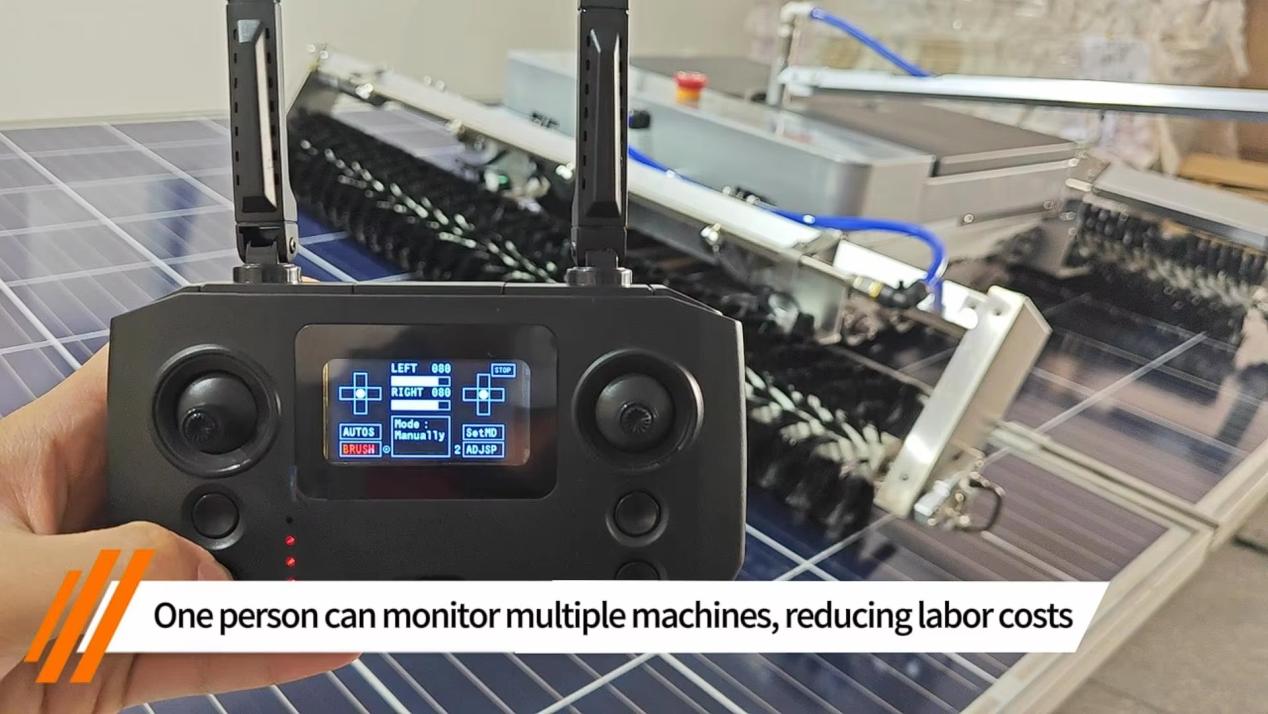Whether it is a centralized photovoltaic power station or a distributed photovoltaic power station, they are all deployed in places far from people and with harsh environments. If not cleaned for a long time, dust, oil stains, bird droppings and other substances will accumulate on the surface of photovoltaic modules over time, seriously affecting the power generation efficiency and economic benefits of the entire photovoltaic system.
Traditional water gun cleaning can no longer meet the cleaning demands. As a result, electric semi-automatic cleaning brushes and fully automatic cleaning robots have emerged in the market, catering to various cleaning scenarios such as residential areas, public sectors, and power projects like solar panels. Our company, Beijing Zhongnengli Electric Technology Co., LTD., has developed dual-head brushes, roller brushes, G2 left-right photovoltaic cleaning robots, and T1 Tracking Solar Cleaning Robot.
1.Residential areas, rooftops and public sectors are more suitable for cleaning brush.
The semi-automatic cleaning brush can clean almost all types of solar panels because the connection between the brush head and the telescopic rod is relatively flexible. Even if the solar panels are not arranged regularly, it can still be cleaned, which is very convenient.
(1) double-headed brush function.
The double-headed brush features nylon bristles that are extremely soft and will not damage the solar panels. The bristles are elastic and wear-resistant, and can also reach the crevices of the solar panels to clean stains. The bristles have a very long service life of 2 to 3 years.
The power of the double-head brush is 79.2*2w, and its rotational speed is 200rpm. It is completely sufficient for cleaning ordinary dust, sand and leaves. For stubborn stains like cement and bird droppings, I recommend the water washing mode. In addition, the brush is equipped with a carbon fiber telescopic rod, which is both durable and very lightweight.
(2) The function of the rolling brush.
The rolling brush adopts a cylindrical brush head. You only need to roll it back and forth to complete the cleaning. The brush head can clean a 65cm wide solar panel at one time, so the cleaning efficiency of the cleaning brush is very high. It can clean 70 to 80 solar panels in one hour.
The most important point is that the rolling brush adopts a brushless motor. The brush has the advantages of long service life, high cleaning efficiency and low friction between the brush disc. The brush is also equipped with a water-blocking brush, which can effectively prevent water from splashing onto the motor. At the same time, with a speed of 350rpm, the brush can remove the water remaining on the solar panel, thereby increasing the service life of the solar panel.
2. The G2 robot is suitable for large power stations with high regular inclination angles.
Regular large-scale power stations are very suitable for G2 solar cleaning robots, especially for solar panels of only one or a few sizes. The cleaning robot can be directly placed on the frame of the solar panel to start cleaning. G2 cleaning robots are also transportation cleaning robots, and you can move them from one row to another.
There are three control methods for robots:Self-button control;Controller control;Web page control.
Even if you want to control multiple robots simultaneously, you can do so through a web page
The robot simultaneously possesses:Dry cleaning mode;Water cleaning mode.
3. The T1 cleaning robot is suitable for power stations of various sizes.
The T1 cleaning robot is very small in size, weighing only 30.5 kilograms. It can be easily operated by one person. The robot is suitable for solar panels of all sizes, but it has strict requirements for angles. In the water washing mode, the Angle of the solar panel cannot exceed 10 degrees, and in the dry cleaning mode, the size of the solar panel cannot exceed 15 degrees.
The robot has the function of image recognition. It can practice positioning the robot and correct the path,You just need to place the robot on the solar panel and start the automatic cleaning mode with the remote control. Then the robot can start working.
If you are interested in our cleaning equipment, please contact us.
Post time: Sep-05-2025






